The Tu-142M is a long-range anti-submarine / reconnaissance aircraft designed by the Tupolev Design Bureau and manufactured by the Kuibyshev Aviation and Taganrog Machinery plants. The aircraft is developed to provide improved naval combat capabilities. It can be deployed primarily in anti-submarine warfare (ASW) operations, maritime reconnaissance and low-range patrol runs.
The aircraft is equipped with a set of anti-submarine weapons to protect territorial waters from potential enemy submarines. The aircraft have been in service with the Indian Navy’s 312nd squadron (INAS 312) since 1988 and are deployed in anti-submarine warfare and patrol missions across the Indian Ocean.
Tu-142M orders and deliveries
Tupolev Design Bureau received an executive order to design and develop the Tu-142 aircraft, which is based on the long-range Tu-95 turboprop strategic bomber. The prototype aircraft was built at Kuibyshev Aviation Plant and made its first flight in June 1968. The first aircraft entered trail operation with the Soviet Naval Aviation in May 1970 and was officially commissioned into service in December 1972.
The first modernised Tu-142M aircraft equipped with advanced avionics performed its maiden flight in 1985. Eight Tu-142Ms (IN-311 to IN-318) in export version (Tu-142ME) were built between 1987 and 1988 at the Taganrog Aviation Plant (now TAVIA) for the Indian Navy. The aircraft were commissioned in 1988.
In 2006 and 2007, two of the Tu-142M aircraft operated by the Indian Navy were upgraded by TAVIA, a division of Beriev Aircraft Company. Two more aircraft were retrofitted in July 2010.
The Indian Navy received seventh modernised Tu-142ME (IN 317) aircraft in August 2014.
Tu-142MR
The Tu-142MR ‘Orel’ Bear J is the final major variant of the Bear and is a VLF band radio communications relay similar in concept to the US E-6A TACAMO. It provides a communications relay capability to submerged SSBNs, SSGNs and SSNs. The Bear J is based on the Bear F airframe but has unique systems. The ventral fairing contains the VLF antenna cable reel, also note the unique nose radome and antenna on the vertical tail. Source ausairpower.net
Communication Equipment
Communication with submarines was the primary purpose of the Tu-142MR. For fulfilling its duty, it was fitted with Oryol (“Eagle”) mission equipment.
The Radio Communications Research and Development Institute, based in Gorkiy, designed it. This equipment was well-associated with the aircraft, which received “Oryol” as its nickname.
The communications equipment consisted of :
- Two HF radios
- Two VHF (very high frequency) radios
- Two UHF (ultra-high frequency) radios
- A VHF radio transmitter
- Two sets of VLF receivers
- Seven HF receivers
The power supply, Etyud relay equipment, transmitters, and receivers were reported as housed in the forward weapons bay of the marine warfare Tu-142 variants.
There were several communications antennas located on the Tu-142MR. Many of them occupied a distinctive, forward-facing spike atop the fin, while others were at the dorsal portion of the aircraft. These last antennas consisted of the traditional HF rails, as well as a Satcom dome and a large Glonass satellite navigation blister.
Additionally, there was a dielectric teardrop fairing over a satellite communications antenna. It was located just aft of the trailing edge of the wing.

Tu-142MR windows with wire mesh for electromagnetic radiation protection. (Photo by Romashov German Viktorovich, CC0 1.0)
The crew’s cabin was VLF-proof or electromagnetic radiation protected. This was done using 1-mm thick steel wire mesh and special coating. The windows have detachable frames of wire mesh. Source nuclearcompanion.com
Tu-142MR planes to be upgraded as part of advanced submarine communications development
Russia’s Naval Forces’ Tu-142MR (NATO reporting name: Bear-J) VLF-band radio communications relay aircraft derived from the Tu-142M long-range antisubmarine warfare aircraft, will be upgraded as part of the development of a sophisticated submarine communication system, according to the Izvestia daily.
The Russian Navy’s unique Tu-142MR radio relay planes designed for communication with submarines on patrol hundreds of meters below the surface will be equipped with advanced communications gear capable, inter alia, of relaying flight missions to sophisticated sea-launched cruise missiles (SLCM) of the Kalibr (SS-N-27 Sizzler) system and Bulava (SS-N-32) intercontinental ballistic missiles. In addition to advanced avionics, the Tu-142MRs also will get unique kilometers-long towed aerials extended from the fuselage for communicating with submarines.
The working documents have been devised and approved. The upgrade will begin on Beriev’s premises in the city of Taganrog soon. The aircraft re-designated as Tu-142MRM will receive the latest electronic communications systems and towed aerials. At the same time, no detail has been available either on the characteristics and designations of the communications systems to be fitted or on the upgrade’s schedule.
The Tu-142MR special communications aircraft derived from the Tu-142M long-range ASW aircraft and adopted for use in the mid-1980s has the official designation as the aircraft of the relay system of the backup naval nuclear forces command and control system. In case of a global nuclear confrontation, the Tu-142MR’s primary mission is to convey the numbers of the flight missions pre-downloaded into the missiles and the launch orders themselves to the patrolling nuclear-powered ballistic missile submarines.
The central part of the cutting-edge communications and relay systems equipping the Tu-142 is the VLF towed aerial that is almost 9 km long and is reeled out of a special drum in the fuselage. During communication sessions, the length of the aerial enables the aircraft and submarines deep under water to communicate.
The communications gear fitting the Tu-142MR since as far back as the mid-‘80s is ill-compatible with the similar equipment and automated control systems of the Russian Navy’s latest Project 885 Yasen (Severodvinsk-class), Project 885M Yasen-M, Project 995 Borei (Dolgorukiy-class) and Project 955A Borei-A submarines.
The feasibility of a Tu-142MR upgrade was first mentioned in 2014, when news came that the trials of the Tu-142MRM were slated for 2014-2016 at the Russian Aerospace Force’s State Flight Test Center in Akhtubinsk. At present, Russia is developing an automated strategic forces command and control system allowing both the real-time ordering of a strategic missile launch and re-targeting of missiles in the ascent phase with their engine still operating.
No doubt, the Tu-142MRM aircraft will become a key component of the advanced automated strategic forces command and control system. Moreover, the system will be fit for use in not only an all-out war but in locals wars as well in order to transmit flight missions to and designate targets for submarines carrying Kalibr SLCMs that have earned raving reports in the Russian operation in Syria.
Currently, the Russian Navy’s air branch operates about 10 Tu-142MRs out of Naval Air Station Mongokhto of the Pacific Fleet and NAS Kipelovo of the Northern Fleet, according to the Izvestia daily.
The Tupolev Tu-142 in its baseline variant is a maritime reconnaissance and ASW aircraft derived from the Tu-95 turboprop strategic bomber. Its first flight occurred in 1968 while the latest variant (Tu-142MZ) was produced until 1994.
The aircraft is fitted with two weapon bays with a total capacity of 11,340 kg combat load for:
– Sonobuoys (RGB-15/25/55A/75)
– Up to 12 torpedoes (APR-2, APR-3 and UMGT-1)
Typical loadout being 126 sonobuoys and 6 torpedoes
Source navyrecognition.com
Tu-142M design and features
The Tu-142M anti-submarine aircraft features monoplane, mid-wing design. It is fitted with a single-fin tail and tricycle landing gear with controlled front wheels. It features a monocoque fuselage, which has a length of 46.4m and a maximum diameter of 2.9m.
Cockpit
The fuselage incorporates a set of longitudinal stringers, cross-set of frames with stressed skin. Two cargo compartments are located at the lower part of the fuselage. The tail section is fitted with a rear cannon mounting. The nose cone section is installed with an in-flight refuelling system. A hatch is located in the niche of the front leg to facilitate emergency access.
In-flight refueling system
Nose cone section
The aircraft is roughly 49.5m in overall length, 12.12m high and has wing span of approximately 50m. It has a maximum takeoff weight of 185,000kg and is operated by a crew of 11, including flight crew and navigators / observers.
The aircraft is armed with a variety of defensive weapons such as Kh-35 anti-ship missile, self-guided missiles, twin AM-23 automatic cannon, depth charges and torpedoes.
Up to 12 torpedoes (APR-2, APR-3 and UMGT-1)
APR-2
APR-2/APR-2M Yastreb anti-submarine missile is designed to engage modern submarines, including multipurpose nuclear missiles, at speeds up to 43 knots in the submarine (at depths up to 600m), periscope and surface positions, as well as surface ships.
The missile was developed by a cooperation of enterprises headed by the SNPP “Region” as a part of the company: Research and Development Institute, Tomsk Research Institute of Economics and Technology, Leningrad Research Institute “Search”, Design Bureau of Petrovsky Plant, Perm NPO named after Kirov, Moscow Research Institute “Quantum” on the basis of APR-1 “Condor”. Chief Designer M.Lisichko.
Marine testing of the APR-2 began in 1969. State tests of the product with the modernized control system “Hawk-M” were completed in 1976, in the same year the product under the designation APR-2M was adopted for service.
Carriers: – antisubmarine helicopters: Ka-27PL, Ka-28, Mi-14PL – aircraft: IL-38, Tu-142M, Tu-142M3.
Export modification of the missile, designated APR-2E “Hawk-E” was released in 1984. Source missilery.info
APR-3
APR-3/APR-3M “Oryol-M” anti-submarine missile is designed to engage modern and advanced submarines, including multi-purpose nuclear missiles, at speeds up to 40 knots in the submarine (at depths up to 800m), periscope and surface position, as well as surface ships in any water areas of the World Ocean, including in areas with shallow depths (60-150m), when the sea waves up to 6 points.
The development of the “Eagle” rocket with turbojet engine was started by NIIPGM (later Central Research Institute “Gidropribor”, St. Petersburg, nowadays JSC SNPP “Region”) in 1969 practically in parallel with the APR-2 “Hawk” rocket. The turbojet engine was created in the Design Bureau of “Saturn” plant under the supervision of Chief Designer A.M.Lyulka. Due to the complexity of the tasks set before the creators of the rocket “Eagle”, the development time was repeatedly postponed. The development of the last version of the “Eagle-M” rocket was completed only in 1990. After it was adopted for service, the missile was designated APR-3 (export version – APR-E).
APR-3E differs from APR-2E in that it is a more efficient engine. Modernized rocket APR-3ME – further improvement of the rocket APR-3E: reduced mass and dimensional characteristics, increased range due to the operating time of the propulsion system, the response radius of the homing system increased its accuracy, speed and interference immunity, reliability of the rocket, expanded range of depths of its application. APR-3ME differs from APR-3E in the presence of an onboard integrated control system with a free inertial navigation system on a modern element base, which expands the combat capabilities of the missile as part of aircraft and marine anti-submarine systems, as well as greater ease of maintenance during operation. Source missilery.info
Kh-35 anti-ship missile
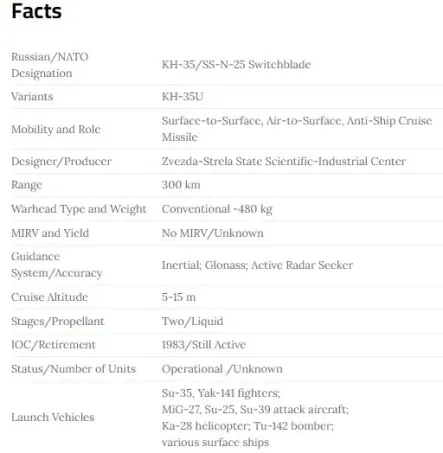 The KH-35 is a subsonic, anti-ship cruise missile that was originally developed in 1983 by the Soviet Union.[1] It has a two stage, liquid fueled propellant and weighs 480 kg and can be launched from fighter jets, attack helicopters, bombers, and naval surface ships. Its modern variant, the KH-35U, was deployed in 2003 and will be equipped on Russia’s fifth-generation fighter aircraft, the Sukhoi PAK FA.[2] The KH-35U uses inertial guidance with a Glonass Receiver and an active radar seeker to find its target.[3] Russian officials claim that the KH-35U is immune to enemy countermeasures. Source missiledefenseadvocacy.org
The KH-35 is a subsonic, anti-ship cruise missile that was originally developed in 1983 by the Soviet Union.[1] It has a two stage, liquid fueled propellant and weighs 480 kg and can be launched from fighter jets, attack helicopters, bombers, and naval surface ships. Its modern variant, the KH-35U, was deployed in 2003 and will be equipped on Russia’s fifth-generation fighter aircraft, the Sukhoi PAK FA.[2] The KH-35U uses inertial guidance with a Glonass Receiver and an active radar seeker to find its target.[3] Russian officials claim that the KH-35U is immune to enemy countermeasures. Source missiledefenseadvocacy.org
AM-23 automatic cannon
The GSh-23 was designed by V. P. Gryazev and A. G. Shipoonov at KBP (Konstrooktorskoye byuro priborostroyeniya – Instrument Engineering Design Bureau). KBP, located at the famous Tula Weapons Factory, was known until 1966 as TsKB-14.
Operating these cannons was one gunner who aimed them using the help of:
- A PS-153K sighting station (pritsel’naya stahntsiya, kormovaya – rear)
- A PRS-4 Krypton gun ranging radar with an acquisition range of some 4 km (2.5 miles). It was designed by OKB-373 (TsKB Avtomatika) and produced in Plant-373 (currently PJSC Saturn) in Omsk.
- A AVS-153 ballistic computer (avtomaht vozdooshnoy strelbyy – automatic air-to-air gunnery device)
- A ADP-153 automatic parallax compensator (avtomaht dopolnitelnovo parallaksa)
Typically left alone in the tail barbette, these operators were rather isolated. The rest of the crew spent most of their time in the cockpit or main portion of the aircraft in their various duties. Source nuclearcompanion.com
Box Tail [PRS-4 Krypton]
| General data: | |
|---|---|
| Type: Radar | Altitude Max: 0 m |
| Range Max: 18.5 km | Altitude Min: 0 m |
| Range Min: 0.2 km | Generation: Late 1970s |
| Properties: Pulse-only Radar |
| Sensors / EW: |
|---|
| Box Tail [PRS-4 Krypton] – Radar Role: TWR, Tail Warning Radar & Tail Gun Director Max Range: 18.5 km |
Generic Tail Gun Director [TV Camera] (2nd Gen)
| General data: | |
|---|---|
| Type: Visual | Altitude Max: 0 m |
| Range Max: 185.2 km | Altitude Min: 0 m |
| Range Min: 0 km | Generation: Visual, 2nd Generation TV Camera (1980s/1990s, AXX-1 TCS) |
| Properties: Identification Friend or Foe (IFF) [Side Info], Classification [Class Info] / Brilliant Weapon [Automatic Target Aquisition], Continuous Tracking Capability [Visual] |
| Sensors / EW: |
|---|
| Generic Tail Gun Director [TV Camera] – (2nd Gen) Visual Role: Visual, Weapon Director TV Camera Max Range: 185.2 km |
Source cmano-db.com
“Zircons” received ultra-long guidance
The Ministry of Defense has tested a unique automated control system (ACS) for aviation and ships. During the exercises in real time, at a distance of hundreds of kilometers, Tu-142 aircraft transmitted information about the conditional enemy to the strike ships and launched a strike. At the same time, the ACS itself identified the most important targets and decided how to destroy them. The novelty is primarily intended for carriers of the latest Zircon hypersonic missiles. But it can also work with missiles of the previous generation – “Yakhont”, “Vulcan” and “Caliber”. According to experts, the new product radically increases the efficiency of the Russian Navy. The combination of the latest automated control system and hypersonic “Zircons” makes it possible to destroy entire enemy squadrons in a matter of minutes.
Automated drills
Sources in the military department told Izvestia that the unique automated combat control system for aircraft and ships has already been tested. Testing was carried out during a large-scale exercise of the Northern Fleet in early August this year. According to the interlocutors of the publication, the new product will become one of the most important control tools for ships and submarines – carriers of hypersonic missiles.
During exercises in the northeastern Atlantic, two crews of Tu-142 reconnaissance anti-submarine aircraft discovered a group of imaginary enemy ships. Target information was transmitted to the strike group. According to the given coordinates, conditional electronic missile launches were carried out by the Northern Fleet cruiser Marshal Ustinov, the frigate Admiral of the Fleet Kasatonov, and the Orel nuclear submarine.
At the same time, the ACS itself identified the most important targets and decided how best to destroy them, sources in the Ministry of Defense told Izvestia. In addition to the promising Zircons, ships under the control of the system can use cruise missiles of previous generations, including Yakhont, Vulcan and Caliber.
Last week, Defense Minister Sergei Shoigu said that the Zircon missiles had demonstrated the highest accuracy during tests with launches at sea targets, which leaves no chance for the enemy. Earlier, Deputy Defense Minister Alexei Krivoruchko said that state tests are planned to be completed this year and to begin serial deliveries of the latest hypersonic ammunition from 2022.
“Russia was the first in the world to receive hypersonic weapons, and a new ACS is needed to fully reveal all of its strengths,” says military expert Vladislav Shurygin. “At the same time, it will also receive information from radars and satellites. After detecting a target, hypersonic speed makes it possible to hit it in a matter of minutes, even at a distance of hundreds of kilometers. During the flight time, the ships simply will not have time to go far.
Looking down
The new automated fleet control system allows receiving information about the enemy not only from aircraft. It collects intelligence received from ground-based radars, satellites, and drones. The command sees the picture in real time and can make decisions on the use of ships, coastal missiles or naval aviation.
For several years now Russia has been building up its satellite constellation, which is engaged in observing the seas and the movements of surface ships in them. On June 25 this year, the first active radar reconnaissance satellite “Pion-NKS” of the “Liana” system was launched into orbit. With the help of an onboard radar, it can scan large water areas and observe the movements of both military and civilian ships at any time of the day or night, including through the clouds.
In addition to the first “Pion”, the “Lotos-C1” satellites, which are also part of the “Liana” system, have been operating in space for several years. They listen to radio broadcasts over the seas, intercept the radio signals of warships and their equipment, which allows them to track their location.
In the last century, before the creation of a space grouping and automated control systems, reconnaissance of enemy ships and target designation to missiles were provided by special Tu-95RTs reconnaissance aircraft. Developed on the basis of strategic bombers, vehicles with powerful radars on board were held in the air for up to a day and constantly patrolled the seas, the Pacific, Atlantic and Indian oceans. These aircraft have now been taken out of service. Source iz.ru
Sensors on-board Tu-142M
The Tu-142M anti-submarine aircraft is equipped with DRDO HOMI airborne electronic support measures system to identify, locate and detect enemy targets. It incorporates Korshun-K integrated automatic search and targeting system and MMS-106 Ladoga magnetometer to detect nuclear-powered submarines.
Korshun-K integrated automatic search and targeting system
Four unique variants exist, the Tu-142 Bear F Mod.1, the Tu-142M Bear F Mod.2, the Tu-142MK Bear F Mod.3 and Tu-142MZ Bear F Mod.4. A single Tu-142MRTs, a variant intended to replace the Bear D, was trialled with the Uspekh-1AV system during the 1980s, but it was abandoned in favour of the Sistema Morskoi Kosmicheskoi Razvedki i Tselkazaniya (SMKRITs) satellite system.
The Tu-142M Bear F Mod.2 variant introduced the Leninets Korshun surface search radar, later replaced with the improved Korshun-K in the Mod.3 and Korshun-KN-N in the Mod.4, both types replacing the earlier Leninets Berkut-95 radar common to the Il-38 May the baseline Tu-142. The Tu-142M also introduced the Pingvin thermal imager, the Visla-2 towed MAD sensor, a infrared tracker and a diesel fume sniffer, with the NPK-142M navigation suite.
The Tu-142MK Bear F Mod.3 added the MMS-106 Ladoga MAD boom on the vertical stabiliser.
The Tu-142MZ Bear F Mod.4 added an upgraded Zarech acoustic system, NK-12MP engines, GSh-23 guns adopted from the Backfire, an improved EW suite, improved AAR equipment and some were fitted with enlarged weapon bays – the Tu-142MZ Bear F Mod.4 entered service in 1993. The last Bear to leave the Taganrog production line was a Tu-142MZ in 1994. Source ausairpower.net
| General data: | |
|---|---|
| Type: Radar | Altitude Max: 0 m |
| Range Max: 277.8 km | Altitude Min: 0 m |
| Range Min: 0.4 km | Generation: Early 1980s |
| Properties: Periscope/Surface Search – Fine Range Resolution + Rapid Scan [1980+], Pulse-only Radar |
| Sensors / EW: |
|---|
| Wet Eye [Korshun-KN-N] – Radar Role: Radar, Surface Search, Medium-Range Max Range: 277.8 km |
Source cmano-db.com
MMS-106 Ladoga magnetometer
| General data: | |
|---|---|
| Type: MAD | Altitude Max: 0 m |
| Range Max: 1.9 km | Altitude Min: 0 m |
| Range Min: 0 km | Generation: Late 1980s |
| Sensors / EW: |
|---|
| MAD [MMS-106 Ladoga] – (Tu-142MK) MAD Role: MAD Max Range: 1.9 km |
Source cmano-db.com
Russian Navy aviation began to upgrade antisubmarine Tupolev Tu-142
The Russian Navy aviation began to upgrade antisubmarine Tupolev Tu-142 aircraft. It received high precision guidance system Gefest SVP-24 which ensured exceptional precision of missile and bomb strikes in the counterterrorist operation in Syria, the Defense Ministry told the Izvestia daily.
Gefest comprises guidance, navigation and control devices. The equipment automatically calculates bomb trajectory to the target and takes into consideration the speed, altitude and weather conditions. SVP-24 provides comparable results to the engagement of precision weapons.
Gefest increases the effectiveness of antisubmarine torpedoes, depth and ordinary air bombs. The torpedo release does not need maximum accuracy, as the homing warhead will find adversary submarines both surfaced and submerged. If necessary, Gefest can place acoustic buoys at sea to search for adversary submarines. The guidance device receives information from aircraft and warships.
The long-range Tu-142 was designed to search for and destroy submarines. It is often engaged in electronic intelligence. The combat radius exceeds 5 thousand km and the aircraft can fly for hours in patrol areas of nuclear submarines. The aircraft is engaged in visual and electronic intelligence in green waters.
The Defense Ministry is testing new aircraft. In particular, Mi-28NM helicopter gunships operated this year in Syrian mountains and desert. It can hit targets in any weather day and night. The helicopter differs from Mi-28N predecessor by an above-rotor radar, new engines and controls, and a modern set to counter adversary air defense.
Due to successful trials the Aerospace Forces will receive hundreds of the helicopters by 2028, the Izvestia said. Source airrecognition.com
Gefest SVP-24
As you can see, the line-of-sight indicator (LOS) has been replaced by a multifunctional display with a push-button frame. In the future, it is expected that the ILS will be replaced with a more advanced one.
I asked the guys from “Hephaestus” to throw the VTsU on the plane.
The photo shows the process of receiving target designation by the aircraft from the TAVKR Kuznetsov (it is possible to receive from other sources).
The coordinates of the target are shown in the upper left part of the screen, as well as from whom the target designation was received.
The type of target (in this case, “airfield”), distance and course to the target are indicated in the upper right part of the screen. In this case, the target is not indicated on the map, since it is outside the screen.
Bombing can be done automatically. After receiving the VCU and turning on the autopilot, the aircraft itself goes to the drop point. The pilot presses the “release button” and at the right moment the bombs are dropped.
This photo shows an element on the MFD (orange arrow on a black background) showing the pilot the direction to the target.
Source naval-flanker.livejournal.com
The aircraft is also fitted with a Strela onboard communication system, a NPK-142M navigation system, a Sayany onboard defence system and a Nerchinsk hydrological defence system. The sonobuoys incorporated in the aircraft include RGB-15, RGB-25 and RGB-55A.
Engines and performance
The Tu-142M anti-submarine aircraft is powered by four NK-12M turboprop engines designed by the Kuznetsov Design Bureau. Each engine develops a power output of 15,000shp. The propulsion system also consists of four coaxial eight-bladed reversible-pitch propellers. The aircraft has a fuel capacity of 87,000kg.
4 x NK-12M turboprop engines
The Kuznetsov NK -12 is a turboprop engine of the Russian producer Kuznetsov. The development started in 1952, and the NK -12 with a maximum of 15,000 horsepower to this day the most powerful turboprop engine ever to be produced in series.
Is a Einwellentriebwerk which drives via a double planetary gear, two coaxial counter-rotating propellers. It was developed in Kuibyshev in 1953 by a group of engineers from the former Junkers works under the leadership of the Austrian Ferdinand Brandner. The technicians had been spent together with numerous other aviation specialists in the Soviet Union in 1946. Source memim.com
The operational speed of the aircraft is 442mph, while the maximum speed is 574.76mph at high altitudes. The operating range of 3,977mi and the maximum range is 7,953.55mi. The service ceiling of the aircraft is 39,000ft.
Aircraft performance characteristics :
Crew:
– 10 people (commander, co-pilot, flight engineer, radio operator, aft turret gunner, 5 surveillance system operators).
– 10 people (Tu-142M3 – commander, co-pilot, first navigator, navigator-navigator, navigator-operator / navigator for combat use, onboard engineer, operator of onboard communications, operator of RGP No. 1, operator of RGP No. 2, operator of CFU)
Length:
– 53.07 m (Tu-142 and its mod., With a refueling bar and a magnetometer fairing)
– 51.55 m (Tu-142M3)
Wingspan:
– 50.04 m
– 50.2 m (Tu-142M3)
Height – 14 , 7 m (all modifications)
Fuselage diameter – 2.9 m (all modifications)
Wing sweep – 35 deg. (all modifications)
Wing area – 289.9 m2 (all modifications)
Maximum take-off weight:
– 182000 kg (Tu-142 during testing and after being put into service)
– 185000 kg (all modifications)
– 187700-190000 kg (Tu-142 / Tu-95MS, flight when refueling in flight)
Normal takeoff weight – 155,000 kg
Maximum landing weight – 135,000 kg
Empty weight:
– 91800 kg (Tu-142)
– 93,891 kg (Tu-142M3)
Payload mass:
– 5500 kg (norm, Tu-142 after being put into service)
– 9000 kg (Tu-142 after being put into service)
– 20,000-30000 kg (overload, Tu-95)
– 11340 kg (at maximum range, Tu-142M)
Fuel weight – 83,900 kg (Tu-142M3)
Maximum speed at altitude:
– 830 km / h (Tu-142 after being put into service)
– 855 km / h (Tu-142, Tu-142M3)
– 925 km / h (Tu -142M according to Western data)
Cruising speed – 735 km / h (Tu-142M) Takeoff
speed – 300 km / h (Tu-142 / Tu-142M3 / Tu-95MS, etc.)
Landing speed – 270 km / h (Tu -142 / Tu-142M3 / Tu-95MS, etc.)
Practical ceiling:
– 11000 m (Tu-142 after being
put into service) – 13500 m (Tu-142M3)
– 9100 m (Tu-95MS, with a full set of weapons)
Flight range:
– 9860 km (Tu-142 during tests)
– 11110 km (Tu-142 after modifications)
– 12300 km (Tu-142 after being put into service, with a payload of 5500 kg, take-off weight of 182 tons and the remainder of 5% of the fuel after landing )
– 12550 km (Tu-142M with a mass of PN – 11.340 kg)
Combat radius during anti-submarine operations:
– 5000 km (Tu-142)
– 5200 km (Tu-142M3)
Duration of patrolling flight:
– 14 hours 40 minutes (Tu-142 during tests)
– up to 17 hours (Tu-142)
– 12-14-16 hours (Tu-142M, Indian Navy)
– up to 34 hours (Tu-95MS , with three refueling from Il-78)
Duration of loitering (speed 450 km / h, altitude 500-2000 m):
– at a distance of 2000 km – 8 hours 40 minutes (Tu-142 after being put into service)
– at a distance of 4500 km – 3 hours 20 minutes (Tu-142 after being put into service) Take-off run
– 1800-2000 m (according to the project)
– 2150-2300 m (with full load, including Tu-142 according to test results)
– 2350 m (Tu -142 after being put into service)
Mileage:
– 1200 m (Tu-142 after being put into service)
Operational overload – 2.5G
Labor input of ground personnel for 1 hour of flight – 57 man / hour (Tu-95MS)
Specification source militaryrussia.ru
Main material source naval-technology.com
Images are from public domain unless otherwise stated
Main image Tu-142MZ / Artyom Kuzhlev – AviMedia


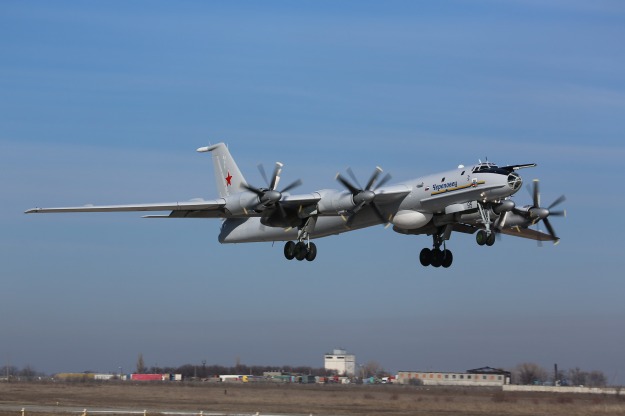
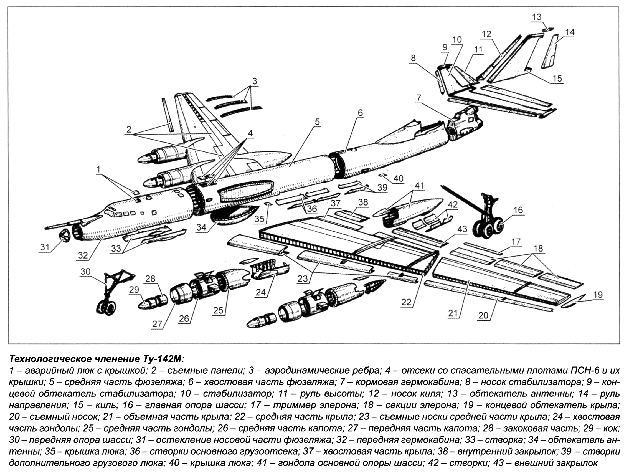








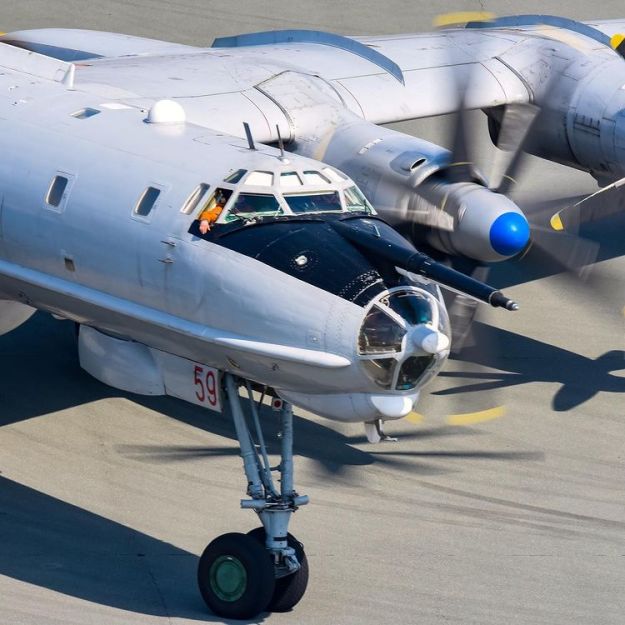

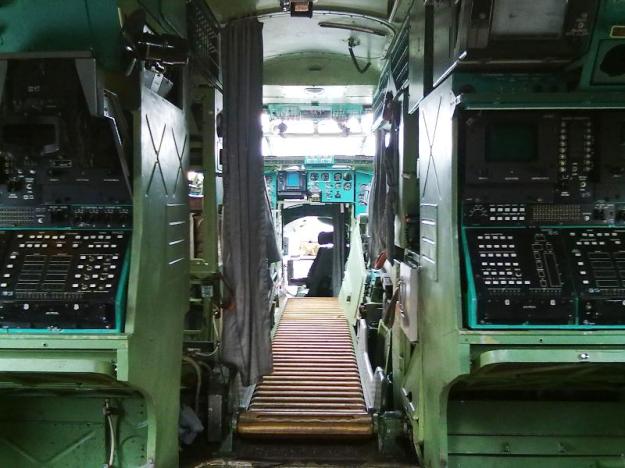

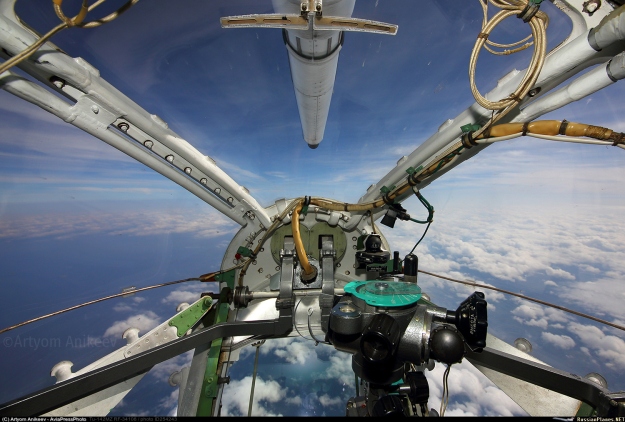
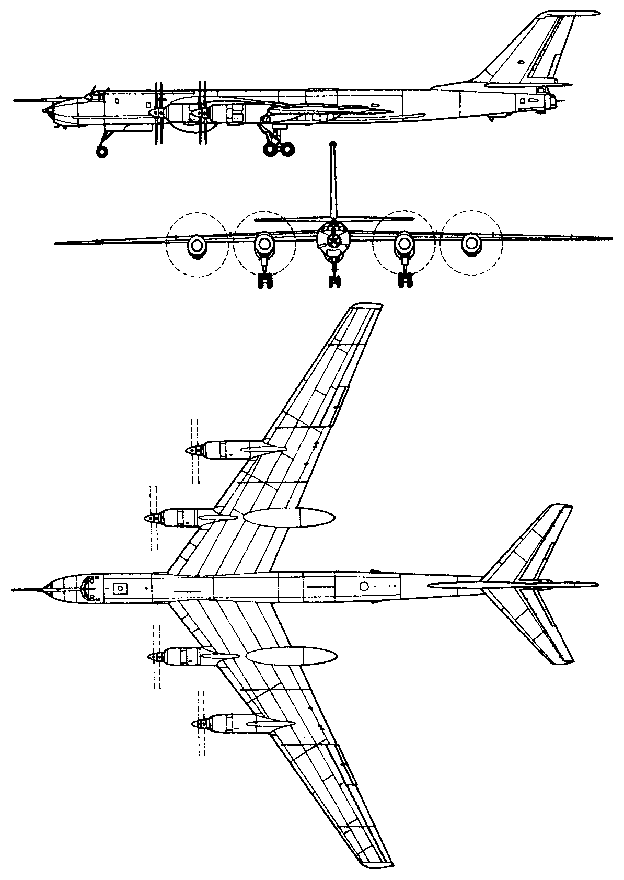




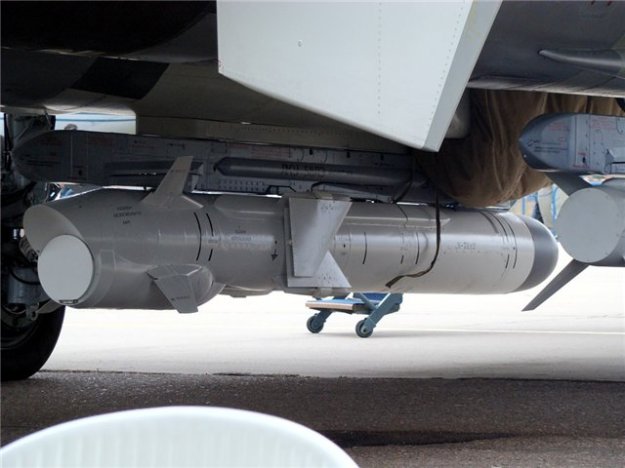



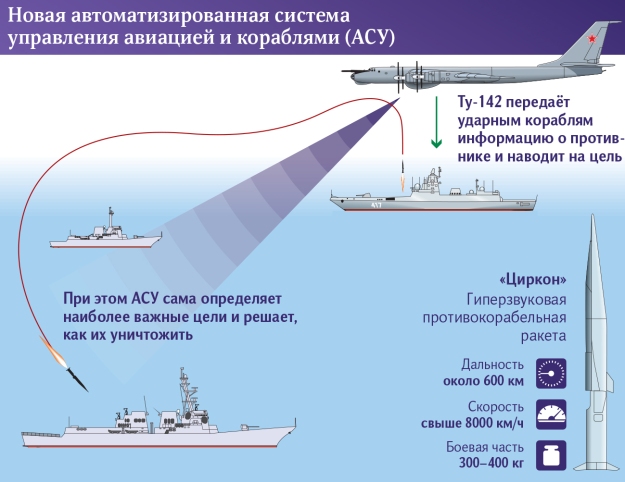






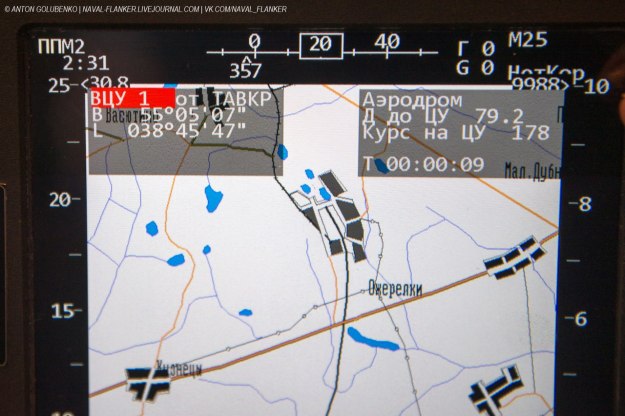


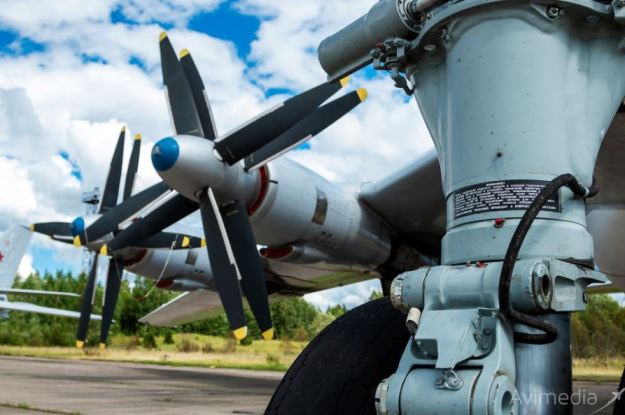


Sehr gut recherchiert…
LikeLike
Thanks appreciate it.
LikeLike